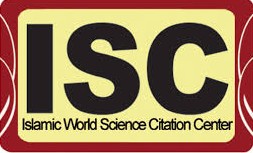The Impact of Economic Diversification on Foreign Direct Investment in the Kingdom of Saudi Arabia
DOI:
https://doi.org/10.35246/y5psh350Keywords:
Economic diversification, Foreign Direct Investment, NetAbstract
The Kingdom of Saudi Arabia has created the economic climate, diversified its economy, encouraged the private sector and worked to increase its contribution to the economic field, and established many incentives and guarantees to increase foreign direct investment flows. The study was divided into three main sections, preceded by an introduction and followed by results and recommendations. The first section dealt with the nature of economic diversification, its types, justifications, and goals in two topics. The first topic is entitled defining economic diversification and its types. The second topic is about the goals and justifications for economic diversification, and then the second topic is about the nature of foreign investment, its types, goals, and importance in light of Vision 2030. The first topic was entitled the concept of foreign investment, its types and objectives, the second topic was the incentives and obstacles to foreign investment in light of Vision 2030, and the third topic dealt with the impact of economic diversification on the development of foreign investment in Saudi Arabia. In two demands, the first entitled the relationship of foreign investment to economic diversification and the Public Investment Fund, and the second demand to increase economic diversification and develop the volume of foreign investment in Saudi Arabia.
Downloads
References
First: Dictionaries:
I. Al-Maany Comprehensive Dictionary, www.almaany.com
Second: Books:
I. Shehata, Ibrahim, 2001, My Testament to My Country (Full Text), Cairo, Egyptian General Book Organization.
II. Abdel Salam, Reda, 2007, Determinants of Foreign Direct Investment in the Era of Globalization: A Comparative Study of the Experiences of Eastern and Southeastern Europe with Application to Egypt, Mansoura, Modern Library.
III. Abdel Hamid, Abdel Muttalib, 1st Edition, 2006, Economic Globalization: Requirements, Companies, and Implications, Alexandria, University Publishing House.
IV. Ismail, Omar Mustafa Jabr, 1st Edition, 2010, Investment Guarantees in Islamic Jurisprudence and Their Contemporary Applications, Jordan, Dar Al-Nafaes for Publishing and Distribution.
V. Shalaby, Magda Ahmed, 2012, Public Finance – Welfare Economics and the Role of the State in Achieving Resource Allocation Efficiency, Habib Printing House.
Third: Academic Theses:
I. Abdel Reda, Ahmed Abdel Razzaq, 2011, The Necessities of Economic Diversification, Kuwait, PhD Dissertation, Faculty of Politics and Economics, Kuwait University, Kuwait Technical Institute.
II. Saadi, Hind, 2017, The Impact of Foreign Direct Investments on Economic Growth in Arab Countries, M’sila, Algeria, PhD Thesis in Commercial Sciences, Faculty of Economic, Commercial, and Management Sciences, Mohamed Boudiaf University.
III. Al-Arabi, Shaimaa Saeed Dakhil, 2016, Foreign Direct Investments in Implementing Public Service Projects (2000-2012), Cairo, Unpublished Master's Thesis, Faculty of Economics and Political Science, Cairo University.
Fourth: Research Papers:
I. Al-Qweder, Amjad Salem Younis & Lataifah, Amjad Salem Qweder, 2014, Foreign Direct Investments and Their Impact on the Saudi Economy: An Analytical Study for the Period (1994-2008), Cairo, Saleh Abdullah Kamel Center for Islamic Economics, Al-Azhar University, Vol. 18, Issue 52.
II. Shabana, Amina Zaki, April 7-9, 1994, The Role of Foreign Direct Investment in Financing Economic Development in Egypt Under Market Mechanisms, Cairo, Egypt, The 18th Annual Scientific Conference of Egyptian Economists, Financing Development Under Market Economies.
III. Economic and Social Commission for Western Asia, 2001, Measuring the Success of Economic Diversification in the GCC Countries, New York, United Nations.
IV. Khidr, Hassan, 2004, Foreign Direct Investment: Definitions and Issues, Development Bridge Series, Kuwait, Issue 2004, Year 3, Arab Planning Institute.
V. Hashem, Khalid, 2018, Economic Diversification and Balanced Development in Saudi Arabia: Opportunities and Challenges, Cairo, Faculty of Economics Journal.
VI. Mohamed, Zidan, 2004, Foreign Direct Investment in Transition Economies – An Analytical View of Gains and Risks, North Africa Economics Journal, Issue 1.
VII. Abdel Salam, Fadia Mohamed, 2011, (Development Experiences in South Korea, Malaysia, and China: Strategies, Policies, and Lessons Learned).
VIII. Al-Shammari, Mayeh Shbeeb, 2010, Diagnosing Dutch Disease and the Foundations of Reforming the Rentier Economy in Iraq, Al-Ghary Journal, Issue 15, Vol. 3.
IX. Al-Beltagy, Mohamed Jaber Abdel Hamid, January 2020, The Role of Foreign Direct Investment in Achieving Sustainable Development in Saudi Arabia, Damietta, A Analytical Study, Faculty of Law Journal, Issue 41.
X. Khattab, Mohamed Abdel Latif, 2016, The Impact of Foreign Direct Investment on Domestic Investment in Saudi Arabia, Baghdad, Baghdad College of Economic Sciences University Journal, Issue 49.
XI. Hussein, Moawiya Ahmed, 2014/1435H, Foreign Direct Investment and Its Impact on Growth and Economic Integration in the Gulf Cooperation Council Countries, Jeddah, King Abdulaziz University Journal: Economics and Administration, Vol. 28, Issue 2.
XII. Al-Hafiz, Mahdi, 2007, Encouraging Investment and Enhancing the Role of the Private Sector in Iraq, Paper Presented at the Scientific Symposium – The Role of Foreign Investment in Arab Economies, Lebanon, Institute for Progress and Development Policies & Iraqi Businessmen Union.
XIII. Diplomatic Journal, 2023, Ministry of Foreign Affairs, Riyadh, Prince Saud Al-Faisal Institute, Issue 100.
XIV. Mabrouk, Nazih Abdel Maqsoud, 2008, The Economic Effects of Foreign Investments, 1st Edition, University Thought House.
Fifth: Regulations, Reports, and Conferences:
I. World Investment Report 2012: Towards a New Generation of Investment Policies, 2022, UN Conference on Trade and Development (UNCTAD), United Nations, New York and Geneva.
II. Mohamed, Saeed Sobeih Yass, 2018, The Role of Investment Law in Improving the Investment Climate and Development in Egypt, Research Paper Presented to the 5th Conference of Egyptian Legal Experts, Egyptian Society for Political Economy, Statistics, and Legislation, "The Role of Legislation in Achieving Sustainable Development Goals", November 4-6.
III. Al-Qasim, Abdul Rahman bin Abdul Aziz, November 1997, Legal Protection for Private Foreign Capital Invested in Saudi Arabia, Riyadh, Symposium on Private Foreign Investment in Saudi Arabia: Incentives and Obstacles, Institute of Diplomatic Studies, Ministry of Foreign Affairs.
IV. Hussein, Moawiya Ahmed, 2009, Foreign Direct Investment and Its Impact on Growth and Economic Integration in the GCC Countries, Riyadh, 17th Annual Meeting of the Saudi Economic Association.
V. Council of Ministers, July 2004, Information and Decision Support Center: "Proposed Policies to Attract Foreign Direct Investment to Egypt".
VI. Khateeb, Mamdouh Awad, 2014, Diversification and Growth in the Saudi Economy, Riyadh, First Conference of Business Schools in the GCC.
VII. Hashad, Nabil, 1996, GATT and the World Trade Organization, Cairo, p. 70 and beyond; also, Zein El-Din, Salah, 2002, The Impact of Globalization on Foreign Direct Investment, Cairo, 6th Annual Conference of the Faculty of Law, Mansoura University.
VIII. Ministry of Planning, 2000, Economic and Social Developments in the United Arab Emirates (1995-2000), Abu Dhabi, UAE.
Sixth: Websites and Online Newspapers:
I. Incentives Strengthen Saudi Arabia’s Experience in Attracting Investments, 2023, www.aljazeera.net.
II. Expert Committee of the Saudi Council of Ministers, Foreign Investment Law, law.boe.gov.sa.
III. Maal Saudi Newspaper, 23/10/2023, https://maaal.com/archives/202410/.
IV. General Authority for Statistics, Foreign Direct Investment Statistics 2023, stats.gov.sa.
V. Saudi Ministry of Investment, misa.gov.sa.
VI. Saudi Central Bank, www.sama.gov.sa.
VII. Nuzad Abdel Rahman Al-Heeti, Manufacturing Industries Still Lack Driving Force, available at http://www.alyaum.com/article/1106261.
VIII. https://ar.wikipedia.org, http://sapq.org.
Seventh: Foreign references:
I. Bertheelemy J. and Sodrling, I. (2001), "The role capital accumulation, adjustment and structural change for economic take off empirical evidence for African growth episodes", World development, 29(2), 55-63.
II. Brownlie, Principles of Public International Law (Oxford: Oxford University Press, 2003), P. 508.
III. Hvidt, M. (2013), "Economic diversification in GCC Countries: Past Record and Future Trends", Kuwait Programme on Development, Governance and Globalization in Gulf States, Number 27.
IV. Keir Eldine, H. (2001), "Economic Diversification, the Case of Egypt 1970-2000". Economic and Social Commission for Western Asia. Expert Meeting on Economic Diversification in the Arab World, Beirut.
V. Kevin Honglin Zhang, How does a host country's export performance affect? The case of china, Department of Economics, Illinois state University 2002, PP.2: 4, available at: http://www.saculty.washington.edu/karyiu/confer/ xian05/ pdf.
VI. M. Somarajah, The International law on Foreign Investment, third edition, Cambridge University Press, 2010, P. 409.
VII. Martin Hvidt, Economic Diversification in GCC Countries: Past Record and Future Trends, Research Paper, Kuwait Programme on Development, governance and Globalization in the gulf States, 2013, P.15.
VIII. OECD, Benchmark, Definition of foreign direct investment, OECD, 1996.
IX. Paterne Ndjambou, diversification économique territoriale : enjeux, determinants, strategies, modalités, conditions et perspectives, these de doctorate présentée à l’université de QUÉBEC à CHICOUTIMI,October,2013.
X. Pinto, Pablo M. and Zhu, Boliang, Fortune or Evil? The Effect of Inward Foreign Direct Investment on Corruption, International Studies Quarterly, Vol. 60, 2016, P. 693.
XI. Raghar Nurkse, Problems of capital formation in underdeveloped countries, Oxford University, New York, 1996, pp. 15-20.
XII. Seyed Komail and Amir Hortamani, The Impact of Trade Integration on FDI Flows: Evidence from Eu and Asian +3, University of Isfahan, Available at: http://www.univ-lehavre-fr/actu/itlege/pdf.
XIII. United Nations, Africa's the technology gap, case studies on Kenya, Ghana, Uganda and Tanzania, July 2003, P. 15.
Downloads
Published
Issue
Section
License

This work is licensed under a Creative Commons Attribution 4.0 International License.
Copyright and Licensing:
For all articles published in Journal of Legal Sciences, copyright is retained by the authors. Articles are licensed under an open access Creative Commons CC BY 4.0 license, meaning that anyone may download and read the paper for free. In addition, the article may be reused and quoted provided that the original published version is cited. These conditions allow for maximum use and exposure of the work.
Reproducing Published Material from other Publishers: It is absolutely essential that authors obtain permission to reproduce any published material (figures, schemes, tables or any extract of a text) which does not fall into the public domain, or for which they do not hold the copyright. Permission should be requested by the authors from the copyrightholder (usually the Publisher, please refer to the imprint of the individual publications to identify the copyrightholder).
Permission is required for: Your own works published by other Publishers and for which you did not retain copyright.
Substantial extracts from anyones' works or a series of works.
Use of Tables, Graphs, Charts, Schemes and Artworks if they are unaltered or slightly modified.
Photographs for which you do not hold copyright.
Permission is not required for: Reconstruction of your own table with data already published elsewhere. Please notice that in this case you must cite the source of the data in the form of either "Data from..." or "Adapted from...".
Reasonably short quotes are considered fair use and therefore do not require permission.
Graphs, Charts, Schemes and Artworks that are completely redrawn by the authors and significantly changed beyond recognition do not require permission.
Obtaining Permission
In order to avoid unnecessary delays in the publication process, you should start obtaining permissions as early as possible. If in any doubt about the copyright, apply for permission. Journal of Legal Sciences cannot publish material from other publications without permission.
The copyright holder may give you instructions on the form of acknowledgement to be followed; otherwise follow the style: "Reproduced with permission from [author], [book/journal title]; published by [publisher], [year].' at the end of the caption of the Table, Figure or Scheme.











